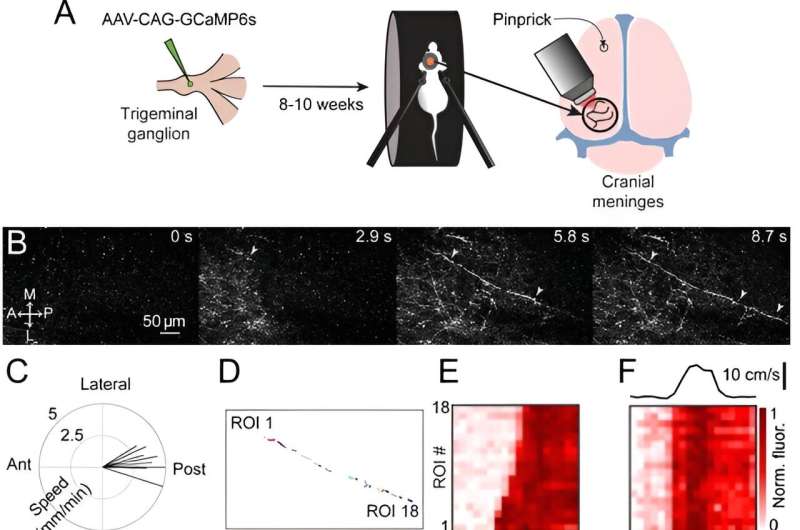Cortical spreading depolarization (CSD) drives wave-like calcium activity in meningeal afferents. Credit: eLife (2024). DOI: 10.7554/eLife.91871.3
A study led by investigators at Beth Israel Deaconess Medical Center (BIDMC) offers new insights into migraine pain mechanisms, particularly the emergence of worsening migraine headaches with movement. The findings offer a potential mechanism that may explain this clinical phenomenon.
The work is published in the journal eLife.
Using a novel imaging approach in mice, researchers explored the impact of migraine-related cortical spreading depolarization on the firing of sensory nerves innervating the meninges that cover and protect the brain, whose activation is considered the putative source of migraine-related pain.
The team identified sensitization of meningeal afferent fibers to small meningeal deformations associated with movement as a potential neural substrate underlying migraine headache exacerbation during normal physical activities.
The team also observed an acute, slow wave of elevated calcium activity propagating across meningeal sensory nerves and along their length in response to cortical spreading depolarization that could mediate the local neuroinflammatory response and subsequent afferent sensitization implicated in migraine pathophysiology.
More information: Andrew S Blaeser et al, Sensitization of meningeal afferents to locomotion-related meningeal deformations in a migraine model, eLife (2024). DOI: 10.7554/eLife.91871.3
Provided by Beth Israel Deaconess Medical Center
























